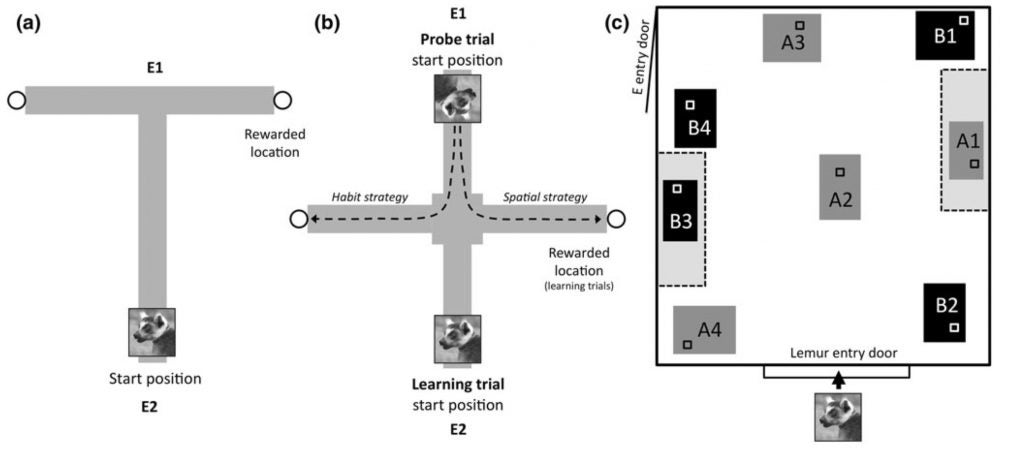Rosati, A. G., Rodriguez, K., & Hare, B. (2014). The ecology of spatial memory in four lemur species. Animal Cognition, 17, 947-961.
[PDF] [Supplementary] [Videos] [Publisher’s Version] Abstract
Evolutionary theories suggest that ecology is a major factor shaping cognition in primates. However, there have been few systematic tests of spatial memory abilities involving multiple primate species. Here, we examine spatial memory skills in four strepsirrhine primates that vary in level of frugivory: ruffed lemurs (Varecia sp.), ring-tailed lemurs (Lemur catta), mongoose lemurs (Eulemur mongoz), and Coquerel’s sifakas (Propithecus coquereli). We compare these species across three studies targeting different aspects of spatial memory: recall after a long-delay, learning mechanisms supporting memory and recall of multiple locations in a complex environment. We find that ruffed lemurs, the most frugivorous species, consistently showed more robust spatial memory than the other species across tasks—especially in comparison with sifakas, the most folivorous species. We discuss these results in terms of the importance of considering both ecological and social factors as complementary explanations for the evolution of primate cognitive skills.



